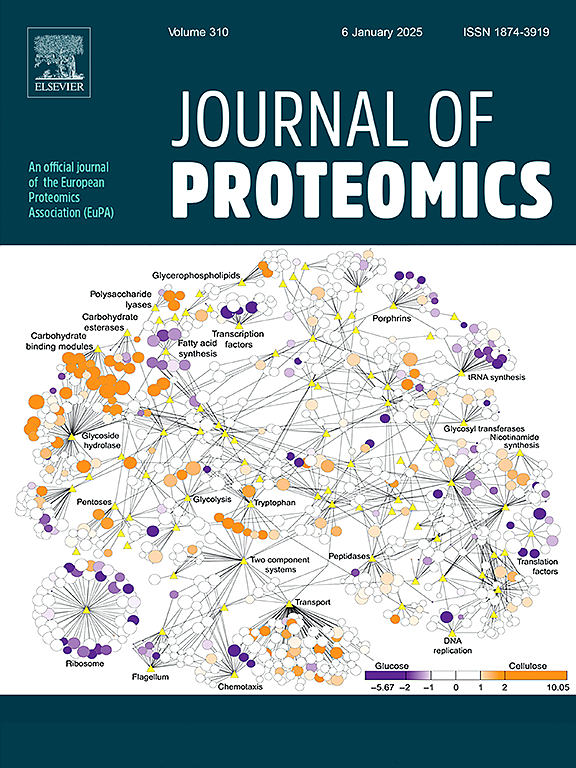Integrative approaches for predicting protein network perturbations through machine learning and structural characterization
IF 2.8
2区 生物学
Q2 BIOCHEMICAL RESEARCH METHODS
引用次数: 0
Abstract
Chromatin remodeling complexes, such as the Saccharomyces cerevisiae INO80 complex, exemplify how dynamic protein interaction networks govern cellular function through a balance of conserved structural modules and context-dependent functional partnerships, as revealed by integrative machine learning and structural mapping approaches. In this study, we explored the INO80 complex using machine learning to predict network changes caused by genetic deletions. Tree-based models outperformed linear approaches, highlighting non-linear relationships within the interaction network. Feature selection identified key INO80 components (e.g., Arp5, Arp8) and cross-compartment features from other remodeling complexes like SWR1 and NuA4, emphasizing shared functional pathways. Perturbation patterns aligned with biological modules, particularly those linked to telomere maintenance and aging, underscoring the functional coherence of these networks. Structural mapping revealed that not all interactions are predictable through proximity alone, particularly with Arp5 and Yta7. By combining structural insights with machine learning, we enhanced predictions of genetic perturbation effects, providing a template for analyzing cross-species homologs (e.g., human INO80) and their disease-associated variants. This integrative approach bridges the gap between static structural data and dynamic functional networks, offering a pathway to disentangle conserved mechanisms from context-dependent adaptations in chromatin biology.
Significance
By leveraging an innovative, integrative machine learning approach, we have successfully predicted and analyzed perturbations in the INO80 network with good accuracy and depth. Our novel combination of machine learning, perturbation analysis, and structural investigation approach has provided crucial insights into the complex's structure-function relationships, shedding new light on its pivotal roles in affected pathways such as telomere maintenance. Our findings not only enhance our understanding of the INO80 complex but also establish a powerful framework for future studies in chromatin biology and beyond. This work represents a step forward in our understanding of chromatin remodeling complexes and their diverse cellular functions, laying the groundwork for future studies that can further refine our computational approaches and experimental techniques in this field.

通过机器学习和结构表征预测蛋白质网络扰动的综合方法
染色质重塑复合体,如酿酒酵母INO80复合体,通过综合机器学习和结构映射方法揭示了动态蛋白质相互作用网络如何通过保守结构模块和上下文依赖的功能伙伴关系的平衡来控制细胞功能。在这项研究中,我们利用机器学习来探索INO80复合体,以预测基因缺失引起的网络变化。基于树的模型优于线性方法,突出了交互网络中的非线性关系。特征选择确定了INO80的关键成分(如Arp5、Arp8)和其他重塑复体(如SWR1和NuA4)的跨室特征,强调了共享的功能途径。扰动模式与生物模块一致,特别是与端粒维持和衰老相关的模块,强调了这些网络的功能一致性。结构图显示,并不是所有的相互作用都可以通过邻近来预测,尤其是Arp5和Yta7。通过将结构洞察与机器学习相结合,我们增强了对遗传扰动效应的预测,为分析跨物种同源物(例如人类INO80)及其疾病相关变体提供了模板。这种整合的方法弥合了静态结构数据和动态功能网络之间的差距,提供了一条途径,从染色质生物学中依赖于环境的适应中解开保守机制。通过利用创新的综合机器学习方法,我们成功地预测和分析了INO80网络中的扰动,具有良好的准确性和深度。我们将机器学习、扰动分析和结构研究方法结合起来,为复合体的结构-功能关系提供了重要的见解,揭示了它在端粒维持等受影响途径中的关键作用。我们的发现不仅增强了我们对INO80复合物的理解,而且为染色质生物学和其他领域的未来研究建立了一个强大的框架。这项工作代表了我们对染色质重塑复合物及其多种细胞功能的理解向前迈出了一步,为进一步完善我们在该领域的计算方法和实验技术的未来研究奠定了基础。
本文章由计算机程序翻译,如有差异,请以英文原文为准。
求助全文
约1分钟内获得全文
求助全文
来源期刊

Journal of proteomics
生物-生化研究方法
CiteScore
7.10
自引率
3.00%
发文量
227
审稿时长
73 days
期刊介绍:
Journal of Proteomics is aimed at protein scientists and analytical chemists in the field of proteomics, biomarker discovery, protein analytics, plant proteomics, microbial and animal proteomics, human studies, tissue imaging by mass spectrometry, non-conventional and non-model organism proteomics, and protein bioinformatics. The journal welcomes papers in new and upcoming areas such as metabolomics, genomics, systems biology, toxicogenomics, pharmacoproteomics.
Journal of Proteomics unifies both fundamental scientists and clinicians, and includes translational research. Suggestions for reviews, webinars and thematic issues are welcome.
 求助内容:
求助内容: 应助结果提醒方式:
应助结果提醒方式:


